田中正造
「真の文明は、山を荒らさず、川を荒らさず、村を破らず、人を殺さざるべし」
True civilization is not to despoil mountains, not to ruin rivers, not to destroy villages, and not to kill people.

田中正造 Shouzou Tanaka
まどあけて見れバ雨さヘ晴れもせずとづれバむねのくるしかりける
人ハ皆桜のころになりにけりうかれあつまる人の花山
さとりけれバ今はた同じ人も鳥りも皆身のほどのほとゝぎすかな
各々が我田に引ける水ほどのすめる心を持つ人ぞなき
真心の人の教を用いぬハ世間しらずの巨燵弁慶(こたつ‐べんけい)
よの人のあわれをおもふ真心の尚つれなきぞ秋の夕ぐれ
まことある人ハ神なり仏なりむすべバ同じ露の玉かな
天が下見れバ社会は面白し山田かかしも雪のだるまも
少しだも人のいのちに害ありて少しくらいハよいと云ふなよ
心なき身にもまことハしられけり赤き紅葉を見るに付けても
花もなく鳥もなかずにういニ泣く谷中の民に春の来ぬとハ
田舎路ハまだ春ならであさましきみやこハ花のさかりなりけり
天災とおもふ野心のなかりせバ世に災の来る事もなし
春雪ハわしがこゝろにそわぬなり矢張堅き氷こそよし
神となり仏ともなる道すがら忘れまじきハ人のふむ道
寝言とてうたわぬよりハうたへかしうたへバうたふ人の訪ふなり
議員どの鬼のちょうちんもちをして足尾の山にやみの夜あるき
千代や千代人の教へとなるべきは君が心の年にありけん
今日ハ今日今日をかぎりのほとゝぎす汝が声のあすハ用なし
正月は餅を食ふので御目出度し
元日や鶴のあたまは真赤なり わがひげしろしみよのはつはる
御袋を賜る人は母袋 なかニハ何か入れて頂戴
たのしまバふとんも蚊帳もあるものか のみにまでも身をバさゝげて
大雨にうたれたゝかれ重荷挽く うしのあゆみのあとかたもなし
教をバ おさな心に おさむべし 老いて我が身の 罪に悔るな
新玉の日の出でそめを みそめては 千代をちぎりて早起きをせん
犬猿ると嘲けられてももと夫婦いぬのさるのと人にかたりて
足尾鉱毒事件の直訴状全文
http://www8.plala.or.jp/kawakiyo/kiyo40_38_02.html
http://www.aozora.gr.jp/cards/000649/files/4892_10243.html
より
亡國に至るを知らざれば之れ即ち亡國の儀に付質問
(明治三十三年二月十七日、衆議院提出)
民を殺すは國家を殺すなり。
法を蔑(ないがしろ) にするは國家を蔑にするなり。
皆自ら國を毀(こわ)つなり。
財用を濫り(みだり)民を殺し法を亂して(乱して)而して(しかしてorしこうして)亡びざる國なし。之を奈何(いかん)。
右質問に及候也。演説
On 7, Ashio Copper Mine stopped operations in every mountains.
7日、足尾銅山は全山で操業を停止した。 - Wikipedia日英京都関連文書対訳コーパス
The Ashio Copper Mine Mineral Pollution Incident occurred and the operation of the state-owned Yahata Iron Factory commenced.
足尾銅山鉱毒事件、官営八幡製鉄所操業開始
Ashio Kodoku Jiken (Ashio Mining Pollution) is often referred to as Ashio Dozan Kodoku Jiken (Ashio copper mine Mining Pollution).
足尾銅山鉱毒事件と表記される場合も多い。
It is also called the Ashio Copper Mine Riot.
足尾銅山暴動事件、あしおどうざんぼうどうじけん、とも。
At that time, copper was one of Japan's major exports with 1/4 of the national output coming from Ashio copper mine.
当時銅は日本の主要輸出品のひとつであり、全国の産出量の1/4は足尾銅山が占めていた。
In 1896, Gunma Prefectural Assembly decided to demand Ashio copper mine to close down operations ("The Proposal for the Issue of the Mining Pollution").
1896年には群馬県議会が足尾銅山の操業停止を求める議決(『鉱毒ノ儀ニ付建議』)を行った。
In 1972, Gunma Prefecture concluded the polluted rice crops were due to the mining pollution from the Ashio copper mine
1972年、群馬県は、米の汚染は足尾銅山の鉱毒が原因と断定。
On April 3, the prefecture concluded the contaminated soil in Morita area was also due to the mining pollution from the Ashio copper mine.
4月3日、県は毛里田地区の土壌汚染についても足尾銅山の鉱毒が原因と断定。
People showed strong interest in this problem and groups of students visited the poisoned area and the Ashio Mine.
おかげで学生らが団体で連日、鉱毒被害地や足尾銅山の見学をするなど、世論は沸騰した。
In 1901, he and his father clashed over their views of the Ashio Copper Mine Mineral Pollution Incident.
1901年(明治34年)、足尾銅山鉱毒事件の見解について、父と衝突。
The Besshidozan Copper Mine and the Ashiodozan Copper Mine were considered two major copper mines in Japan and people said the Ashiodozan Copper Mine from the east and the Besshidozan Copper Mine from the west at the time.
当時、東の足尾銅山、西の別子と言われた。
Tochigi Prefectural Assembly had already decide to demand the research in Ashio copper mine in 1890, however, because Tochigi was not only the damaged area but also the base of the company possessing Ashio copper mine, the issue became complicated in the assembly, and in 1896 they did not decided anything concerning the mining pollution.
一方、栃木県議会は1890年に足尾銅山の調査を求める議決を行っていたが、鉱毒被害地と足尾銅山双方の地元であるという事情から議会が紛糾し、1896年には鉱毒に関する議決は行わなかった。
In 1891, over the Ashio Copper Mine Mineral Pollution Incident, he received questions from Shozo TANAKA in the Imperial Diet but responded that he did not understand the purport of the questions (Mutsu's second son, Junkichi, had been adopted by Ichibei FURUKAWA, the manager of Ashio Copper Mine).
明治24年(1891年)に足尾銅山鉱毒事件をめぐり、帝国議会で田中正造から質問主意書を受けるが、質問の趣旨がわからないと回答を出す(二男潤吉は足尾銅山の経営者、古河市兵衛の養子であった)。
Later on, Sukematsu MINAMI who came to Ashio Copper Mine from Yubari Cole Mine cooperated with Nagaoka, and they set up Dainihon Rodo Shiseikai, Ashio branch on December 5, 1906.
その後、夕張炭鉱から足尾銅山にやってきた南助松は、永岡と協力し、1906年12月5日、大日本労働至誠会足尾支部を結成。
In place of it, it was the production of bronze at Ashiodozan Copper Mine and Besshidozan Copper Mine that was in its prime in Genroku era.
代わって元禄年間に産出が隆盛を極めたのが足尾銅山および別子銅山からの銅の産出であった。 - Wikipedia日英京都関連文書対訳コーパス
Release of an expressionism movie 'Come Back, Dr. Caligari,' proclamation of 'Land Lease and House Lease Act' and of the metric system, foundation of 'Dainihon Shukyu Kyokai' (Japan Football Association) (present Japan Football Association), and 'Ashio Copper Mine Mineral Pollution Incident'
表現主義映画「カリガリ博士」公開、「借地法・借家法」「メートル法」公布、「大日本蹴球協会」(現・日本サッカー協会)創立、「足尾銅山争議」
Ashio Mining Pollution was a pollution incident which occurred at Ashio copper mine located around Watarase-gawa River in Tochigi Prefecture and Gunma Prefecture at the end of the 19th and the beginning of the 20th century.
足尾鉱毒事件(あしおこうどくじけん)は、19世紀から20世紀の栃木県、群馬県の渡良瀬川周辺で起きた足尾銅山の公害事件。
As a result of the introduction of Western modern mining technology, Ashio copper mine became Japan's largest copper producer and became the largest in East Asia which produced thousands of tons annually.
さらに西欧の近代鉱山技術を導入した結果、足尾銅山は日本最大の鉱山となり、年間生産量数千トンをかぞえる東アジア一の銅の産地となる。
However, at that time the cause was unclear; and in Choya Shinbun, the newspaper that first reported the incident on August 12, reported ambiguously that Ashio copper mine may have caused it.
ただし、当時は原因が分かっておらず、これを8月12日に最初に報じた朝野新聞も、足尾銅山が原因かもしれないというような、あいまいな書き方をしている。
On October 31 of the same year, Shimotsuke Shinbun (newspaper) reported that trees in Ashio area had been dying since about the previous year; and those two articles are considered to have been the first reports linking the Ashio copper mine and the pollution.
同年10月31日、下野新聞が前年ごろから足尾の木が枯れ始めていることを報じ、これら2つが足尾銅山と公害を結びつける最初期の報道と考えられる。
In 1945 World War II ended, and there were no longer controls on speeches and meetings, and in the following year, the peasants of the Watarase-gawa valley of the eastern Gunma Prefecture gathered and formed the Union for Relocation of Ashio copper mine Refinery.
1945年、終戦となり、言論・集会への弾圧が行われなくなると、翌1946年、群馬県東部の渡良瀬川流域の農民が集まり、足尾銅山精錬所移転期成同盟会が結成された。
The "Ashio Riot" was an event occurred from February 4, 1907 to February 7, that mine workers in Ashio Copper Mine destroyed and set fire to the facilities in the mine.
足尾暴動事件(あしおぼうどうじけん)は、1907年2月4日から2月7日まで、足尾銅山の坑夫らが、鉱山施設などを破壊、放火した事件。
At that time in the Ashio Copper Mine, mine workers' complaints were mounting because of their low wages due to the cost for prevention of mineral pollution which was ordered in Ashio Mineral Pollution Incident and their poor working conditions.
当時、足尾銅山は、足尾鉱毒事件で命令された鉱毒防止費用などが負担となり、鉱山労働者の賃金は安く、しかも、労働条件は過酷なもので、労働者の不満は高まっていた。
Naoya SHIGA's grandfather, Naomichi SHIGA, served as a butler of the Soma Clan, the lord of the former Soma- Nakamura Domain; he developed Ashio Copper Mine together with Ichibe FURUKAWA, the founder of Furukawa Zaibatsu, and was involved in the Soma Incident.
志賀直哉の祖父・直道は、旧相馬中村藩主相馬氏の家令を勤め、古河財閥創始者古河市兵衛と共に足尾銅山の開発をし、相馬事件にも係わった。
(SHIGA wanted to participate in the excursion tour of the Ashio Copper Mine Mineral Pollution Incident; however, his father opposed it because SHIGA's grandfather used to run the Ashio Copper Mine jointly with Ichibe FURUKAWA.)
(志賀が足尾鉱毒事件の見学会に参加しようとしたところ、祖父がかつて古河市兵衛と足尾銅山を共同経営していたという理由から父に反対された)
Shozo TANAKA, who was trying to pin down the pollution caused by the Ashiodozan Copper Mine, valued Iba's achievements and referred to the Besshidozan Copper Mine as the 'roll model that every Japanese copper mine should follow.'
足尾銅山の鉱害を追及していた田中正造も伊庭の一連の行動を評価し、別子銅山を「我が国銅山の模範」とまで言い切っている。
Furukawa zaibatsu that built a fortune due to the booming (1904 to 1905) resulted from Japanese-Russo War had pollution problems caused by the Ashio Copper Mine Mineral Pollution and conciliated public opinion by donation to the public.
日露戦争による好況(1904-05年)によって財を成した古河財閥は、一方で足尾銅山の鉱毒による公害問題を抱えており、公のために寄付をすることで世論の沈静化を願った。
During this period, the major part of these measures was restrictions of speech and of the press, such as banning the publication immediately after issuance of a record of the mining pollution "Ashio Dozan Kodoku, Watarase-gawa-engan Jijo" (Ashio copper mine Mining Pollution, Status of Watarase-gawa River) published in 1891 by the residents of Azuma Village (Tochigi Prefecture).
この時代は、1891年刊行の吾妻村(栃木県)民らによる鉱毒の記録集『足尾銅山鉱毒・渡良瀬川沿岸事情』を発刊直後に発売禁止にするなど、言論封殺が主な対策であった。
In 1897 large numbers of peasants from the affected area went to Tokyo to protest (called 'Oshidashi', protest) and the general verdict on the company and government became negative, then, in March of the same year, the government established the Research Committee of Ashio copper mine Mining Pollution and issued several acts for preventing mining pollution.
1897年、鉱毒被害地の農民が大挙して東京に陳情(当時の表現では押出し)を行うなど、世論が高まると、同年3月、政府は足尾銅山鉱毒調査委員会を設置し、数度の鉱毒予防令を出した。
Ten years after, in 1636, it was decided that the bakufu carried on a full-scale operation of mintage of Kanei Tsuho as a result of an increase in production of copper from copper mines including Ashio Copper Mine, and three zeniza were established; Hashiba in Asakusa, Edo, Tsuna-nawate in Shiba (Minato Ward, Tokyo) and Sakamoto in Omi Province (Otsu City).
10年後の寛永13年(1636年)、足尾銅山などからの銅の産出が増大したことを受け、幕府が本格的に寛永通寳の鋳造を司ることになり、このとき設置された銭座は江戸浅草橋場、芝(東京都港区)網縄手および近江国坂本(大津市)の3座であった。
As the mining pollution damage caused by the Ashio copper mine became serious, Shozo TANAKA, a member of the House of Representatives, set up a mining damage office for both Ibaragi and Gunma Prefecture on October 4, 1896 at Unryu-ji Temple in Watase Village, Oura County, Gunma Prefecture (the present Tatebayashi City, Gunma Prefecture.)
足尾銅山による鉱毒被害が増大すると、衆議院議員田中正造の主導の下、1896年10月4日、群馬県邑楽郡渡瀬村(群馬県)(現館林市)にある雲龍寺に、栃木・群馬両県鉱毒事務所がおかれた。
Shozo TANAKA also made a similar comment in 1901.
田中正造も、1901年当時、同様の主張を行った。
This number was used when Shozo TANAKA was summoned to the hearing at the Diet.
この数値は、田中正造の国会質問でも使用された。
Against the composition, Shozo TANAKA held a demonstration to stop the victims.
これに対し、田中正造はこの示談を行わないよう運動を行った。
Shozo TANAKA is famous as the central figure of the farmers' movement at this time.
田中正造はこのときの農民運動の中心人物として有名である。
And after the central figure of the movement, Shozo TANAKA died in 1913, the movement also almost died.
さらに運動の中心人物であった田中正造が1913年に没するとほぼ消滅した。
Shozo TANAKA, who had played an important role in establishment of a mining damage office, also persuaded them.
このとき、鉱毒事務所でも重要な役割を担っていた田中正造も説得に当たった。
Shozo TANAKA, however, was not informed what was going on in Kawamata when he was raising questions about the copper-mine poisoning at the National Diet session.
一方、田中正造は事実を知らず、国会で鉱毒問題に関する質問を行っていた。
In the Ashio Copper Mine Mineral Pollution Incident, he supported Shozo TANAKA and devoted effort to relief work for the peasants.
足尾鉱毒事件では田中正造を助け、農民救済運動に奔走。
Although from 1891 Shozo TANAKA frequently raised the issue of the pollution at the Diet, the government did not actively take any anti mining pollution measures.
1891年からたびたび田中正造が国会で質問したにもかかわらず、政府は積極的には鉱毒対策を行わなかった。
Since Shozo TANAKA lived Yanaka Village and the village was the stronghold of the movement against the pollution, people said that the plan had been made to crush the movement.
谷中村には田中正造が住み、公害運動の拠点となっていたことから、運動をつぶすための決定だといわれた。
Shozo TANAKA, a member of the House of Representatives from Sano made enquiries at the parliament beginning in 1891, and the damages by the mining pollution became public throughout the nation.
佐野出身の衆議院議員田中正造は1891年以降、たびたび国会で鉱毒の質問を行い、鉱毒の害は全国に知れ渡った。
The committee concluded 'as for the copper which damages crops, there are the residues flowed before the preventive construction, however in the current operation, the flowing poison is a little, so the government exonerates Furukawa Mining from blame' (Masaomi YUI "Tanaka Shozo"), and in fact, in October of 1903, 'the damaged area had a good crop of rice' and Shozo TANAKA also gave lectures at many places setting the title of the lecture as 'the real circumstances of the rich harvest in the damaged area' ("the complete works of Shozo TANAKA" page 477 of the "supplementary volume").
同調査会の結論は「作物に被害を与える銅分は、予防工事前の残留分で現業によるものは少ないとして古河鉱業の責任を解除した」(由井正臣『田中正造』)ものだったが、実際、1903年10月には「被害地の稲は豊作」になり、田中正造も「被害地豊作の実況」と題する演説をして歩いた(『田中正造全集・別巻』477頁)。
It is also noted that the family was fiercely resisted by local residents including Shozo TANAKA, because the family oppressed them in Shimotsuke Province where they had their "syoryo" (territory) during the end of the Edo period.
幕末期に所領のあった下野国で圧制を強いて田中正造ら地元住民に激しく抵抗された事でも知られている。
After Shozo TANAKA made direct appeals to the government, popular opinion changed in the residents' favor as many groups of college students visited Ashio one after another, and the government, realizing it could become a threat, hastily set up the second Research Committee of the Mining Pollution in 1902.
田中正造の直訴後、学生が相次いで団体で足尾見学に向かうなど、世論の盛り上がりにあわてた政府は、1902年に第二次鉱毒調査委員会を設置した。
Particularly Yorozu Choho, Yokohama Mainichi Shimbun (It is unrelated to the present Mainichi Shimbun), Yomiuri Shimbun reported daily on the copper-mining problem and also about Shozo TANAKA's direct appeal to the emperor.
特に、萬朝報、横浜毎日新聞(現在の毎日新聞とは無関係)、読売新聞などは、鉱毒や、田中正造の直訴事件を連日のように伝えた。
Shozo TANAKA, a member of the House of Representatives and a leader of the peasant movement, announced his departure from the Kenseihon Party which he was then affiliated when he was questioning the Kawamata Incident at the Diet meeting on February 15, 1900.
衆議院議員であり、農民運動の先導者であった田中正造は、1900年2月15日、事件に関する質問演説を行っている途中で、当時所属していた憲政本党を離党した。
Shozo TANAKA, who was trying to pin down the pollution caused by the Ashiodozan Copper Mine, valued Iba's achievements and referred to the Besshidozan Copper Mine as the 'roll model that every Japanese copper mine should follow.'
足尾銅山の鉱害を追及していた田中正造も伊庭の一連の行動を評価し、別子銅山を「我が国銅山の模範」とまで言い切っている。
The movement against the pollution gathered pace after the floods in 1896, and October 4, under the leadership of Shozo TANAKA, the mining pollution office of Tochigi Prefecture and Gunma Prefecture was estavlished in Unryu-ji Temple in Watarase Village, Oura County, Gunma Prefecture (present Shimohayakawada-cho, Tatebayashi City).
反対運動が最も盛んになったのは、1896年の洪水以降で、田中正造の主導の元、10月4日、群馬県邑楽郡渡瀬村(群馬県)(現在の館林市下早川田町)にある雲龍寺に、栃木・群馬両県の鉱毒事務所が作られた。
As the mining pollution damage caused by the Ashio copper mine became serious, Shozo TANAKA, a member of the House of Representatives, set up a mining damage office for both Ibaragi and Gunma Prefecture on October 4, 1896 at Unryu-ji Temple in Watase Village, Oura County, Gunma Prefecture (the present Tatebayashi City, Gunma Prefecture.)
足尾銅山による鉱毒被害が増大すると、衆議院議員田中正造の主導の下、1896年10月4日、群馬県邑楽郡渡瀬村(群馬県)(現館林市)にある雲龍寺に、栃木・群馬両県鉱毒事務所がおかれた。
It may have been that he reached the limit of his physical strength after suffering a cerebral hemorrhage in 1963 and having a full gastrectomy in 1972, but he left film industry after his final work, the 1974 film "Ranru no Hata" (Ragged Flags) depicting Shozo TANAKA, and made writing his main occupation.
1963年に脳出血、1972年に胃を全摘出するなどして体力の限界を感じたのか、田中正造を描いた1974年の『襤褸の旗』を最後に映画の製作から遠ざかり、以後は文筆業を主な仕事にする。
In 1891, over the Ashio Copper Mine Mineral Pollution Incident, he received questions from Shozo TANAKA in the Imperial Diet but responded that he did not understand the purport of the questions (Mutsu's second son, Junkichi, had been adopted by Ichibei FURUKAWA, the manager of Ashio Copper Mine).
明治24年(1891年)に足尾銅山鉱毒事件をめぐり、帝国議会で田中正造から質問主意書を受けるが、質問の趣旨がわからないと回答を出す(二男潤吉は足尾銅山の経営者、古河市兵衛の養子であった)。
Ryukai MATSUMOTO says that it may not be said all the deaths were caused by the mining pollution, however, since there were a greater number of deaths than births while there were more births than deaths in Japan at that time, those deaths should be considered to have been caused by the mining pollution (it is considered that in fact among those deaths, many cases were caused by malnutrition, since the people became poor by the mining pollution; however Shozo TANAKA and Matsumoto and others said that those cases should be counted as the victims by the mining pollution).
松本隆海は、すべてが鉱毒が原因だとはいえないかもしれないが、当時の日本は出生数のほうが多いにもかかわらず、死者数のほうが多いのは、鉱毒に関連があるとしている(実際には、鉱毒が原因で貧困となり、栄養状態が悪化して死亡した者が多く含まれていると考えられるが、田中正造や松本はこれらも鉱毒による死者とすべきだとしている)。
http://www.jca.apc.org/~altmedka/yom-12-4.html
より
以後約四ヵ月、ロックアウトされた争議団四百余名は読売の社外で闘ったが、政治情勢は逆風に向かっていた。新聞通信労組がストライキをかけて取り組んだ「十月闘争」は失敗に終わり、結局、中心幹部合計で三七名の解雇と退社を条件に残りが復職という屈伏を強いられた。復職者は、すでに社内で組織されていた御用組織、「新」従業員組合への「統一」を強要された。以後、読売の「新」従業員組合の活動は、ほとんど会社側に押えられつづけとなる。争議解決の翌年には、二・一ゼネストのマッカーサー指令による中止という全国的な敗北が待ち受けていた。
他の新聞通信単一企業支部も一九四九年から一九五〇年にかけてのレッド・パージ前後に四分五裂し、再び企業別従業員組合に戻ってしまった。新聞通信へのレッド・パージは合計で七〇四名、他産業の平均解雇率〇・三八%を大幅に上回る二・三五%であり、最も解雇率が高かった。おもなところは、NHK一一九名、朝日一〇四名、毎日四九名、中国三六名、共同三五名、北海道三五名、読売三四名というのが公式発表であるが、読売の場合は第二次争議での退社三七名を加えると計七一名が職場から排除されたことになる。
宮内庁関係予算の推移
http://www.kunaicho.go.jp/kunaicho/kunaicho/pdf/yosansuii-h23.pdf
http://www.kunaicho.go.jp/kunaicho/kunaicho/pdf/yosangaiyo-h23.pdf
女性天皇に反対でも賛成でもないですが、費用が増加するのではないか心配です
さらに、現状は皇族の人権面を考慮した場合 問題があるのではないでしょうか?
女性天皇を認める場合は本人の拒否権を与えるべきではないかと思う。
天皇陛下には職業の選択の自由もなく。選挙権もない。
必ずしも幸福な環境であるとはいえない。女性が皇族と結婚すること以上に
男性が女性天皇と結婚する場合、かなりのプレシャーになるのでは
また、愛情以外の要素が入る可能性があり。結婚が困難になる可能性もあるのではないでしょうか。皇族全員が天皇になることを望まない場合や、天皇家が途絶えたときの対応方法として4年に1度 天皇を選挙で選ぶなどの制度を作成しておけば、天皇に選ばれた人も、自分の意思(天皇になりたくない時、他の職業を望む時)自分の意思を発言しやすいのでは。
ノーベル賞などを受賞者などから国民投票で選ぶなどすれば、国民からも賛同を得られやすいのではないでしょうか?また 天皇該当者が幼少の場合の対応策としても良いと思う。
4年間だけなら名誉職として担当してもらうことも、負担が少ないのでは。
現状は皇族の人権面を考慮した場合 問題があるのではないか?という面での討論も必要ではないでしょうか?
「真の文明は、山を荒らさず、川を荒らさず、村を破らず、人を殺さざるべし」
True civilization is not to despoil mountains, not to ruin rivers, not to destroy villages, and not to kill people.

田中正造 Shouzou Tanaka
まどあけて見れバ雨さヘ晴れもせずとづれバむねのくるしかりける
人ハ皆桜のころになりにけりうかれあつまる人の花山
さとりけれバ今はた同じ人も鳥りも皆身のほどのほとゝぎすかな
各々が我田に引ける水ほどのすめる心を持つ人ぞなき
真心の人の教を用いぬハ世間しらずの巨燵弁慶(こたつ‐べんけい)
よの人のあわれをおもふ真心の尚つれなきぞ秋の夕ぐれ
まことある人ハ神なり仏なりむすべバ同じ露の玉かな
天が下見れバ社会は面白し山田かかしも雪のだるまも
少しだも人のいのちに害ありて少しくらいハよいと云ふなよ
心なき身にもまことハしられけり赤き紅葉を見るに付けても
花もなく鳥もなかずにういニ泣く谷中の民に春の来ぬとハ
田舎路ハまだ春ならであさましきみやこハ花のさかりなりけり
天災とおもふ野心のなかりせバ世に災の来る事もなし
春雪ハわしがこゝろにそわぬなり矢張堅き氷こそよし
神となり仏ともなる道すがら忘れまじきハ人のふむ道
寝言とてうたわぬよりハうたへかしうたへバうたふ人の訪ふなり
議員どの鬼のちょうちんもちをして足尾の山にやみの夜あるき
千代や千代人の教へとなるべきは君が心の年にありけん
今日ハ今日今日をかぎりのほとゝぎす汝が声のあすハ用なし
正月は餅を食ふので御目出度し
元日や鶴のあたまは真赤なり わがひげしろしみよのはつはる
御袋を賜る人は母袋 なかニハ何か入れて頂戴
たのしまバふとんも蚊帳もあるものか のみにまでも身をバさゝげて
大雨にうたれたゝかれ重荷挽く うしのあゆみのあとかたもなし
教をバ おさな心に おさむべし 老いて我が身の 罪に悔るな
新玉の日の出でそめを みそめては 千代をちぎりて早起きをせん
犬猿ると嘲けられてももと夫婦いぬのさるのと人にかたりて
足尾鉱毒事件の直訴状全文
http://www8.plala.or.jp/kawakiyo/kiyo40_38_02.html
http://www.aozora.gr.jp/cards/000649/files/4892_10243.html
より
亡國に至るを知らざれば之れ即ち亡國の儀に付質問
(明治三十三年二月十七日、衆議院提出)
民を殺すは國家を殺すなり。
法を蔑(ないがしろ) にするは國家を蔑にするなり。
皆自ら國を毀(こわ)つなり。
財用を濫り(みだり)民を殺し法を亂して(乱して)而して(しかしてorしこうして)亡びざる國なし。之を奈何(いかん)。
右質問に及候也。演説
On 7, Ashio Copper Mine stopped operations in every mountains.
7日、足尾銅山は全山で操業を停止した。 - Wikipedia日英京都関連文書対訳コーパス
The Ashio Copper Mine Mineral Pollution Incident occurred and the operation of the state-owned Yahata Iron Factory commenced.
足尾銅山鉱毒事件、官営八幡製鉄所操業開始
Ashio Kodoku Jiken (Ashio Mining Pollution) is often referred to as Ashio Dozan Kodoku Jiken (Ashio copper mine Mining Pollution).
足尾銅山鉱毒事件と表記される場合も多い。
It is also called the Ashio Copper Mine Riot.
足尾銅山暴動事件、あしおどうざんぼうどうじけん、とも。
At that time, copper was one of Japan's major exports with 1/4 of the national output coming from Ashio copper mine.
当時銅は日本の主要輸出品のひとつであり、全国の産出量の1/4は足尾銅山が占めていた。
In 1896, Gunma Prefectural Assembly decided to demand Ashio copper mine to close down operations ("The Proposal for the Issue of the Mining Pollution").
1896年には群馬県議会が足尾銅山の操業停止を求める議決(『鉱毒ノ儀ニ付建議』)を行った。
In 1972, Gunma Prefecture concluded the polluted rice crops were due to the mining pollution from the Ashio copper mine
1972年、群馬県は、米の汚染は足尾銅山の鉱毒が原因と断定。
On April 3, the prefecture concluded the contaminated soil in Morita area was also due to the mining pollution from the Ashio copper mine.
4月3日、県は毛里田地区の土壌汚染についても足尾銅山の鉱毒が原因と断定。
People showed strong interest in this problem and groups of students visited the poisoned area and the Ashio Mine.
おかげで学生らが団体で連日、鉱毒被害地や足尾銅山の見学をするなど、世論は沸騰した。
In 1901, he and his father clashed over their views of the Ashio Copper Mine Mineral Pollution Incident.
1901年(明治34年)、足尾銅山鉱毒事件の見解について、父と衝突。
The Besshidozan Copper Mine and the Ashiodozan Copper Mine were considered two major copper mines in Japan and people said the Ashiodozan Copper Mine from the east and the Besshidozan Copper Mine from the west at the time.
当時、東の足尾銅山、西の別子と言われた。
Tochigi Prefectural Assembly had already decide to demand the research in Ashio copper mine in 1890, however, because Tochigi was not only the damaged area but also the base of the company possessing Ashio copper mine, the issue became complicated in the assembly, and in 1896 they did not decided anything concerning the mining pollution.
一方、栃木県議会は1890年に足尾銅山の調査を求める議決を行っていたが、鉱毒被害地と足尾銅山双方の地元であるという事情から議会が紛糾し、1896年には鉱毒に関する議決は行わなかった。
In 1891, over the Ashio Copper Mine Mineral Pollution Incident, he received questions from Shozo TANAKA in the Imperial Diet but responded that he did not understand the purport of the questions (Mutsu's second son, Junkichi, had been adopted by Ichibei FURUKAWA, the manager of Ashio Copper Mine).
明治24年(1891年)に足尾銅山鉱毒事件をめぐり、帝国議会で田中正造から質問主意書を受けるが、質問の趣旨がわからないと回答を出す(二男潤吉は足尾銅山の経営者、古河市兵衛の養子であった)。
Later on, Sukematsu MINAMI who came to Ashio Copper Mine from Yubari Cole Mine cooperated with Nagaoka, and they set up Dainihon Rodo Shiseikai, Ashio branch on December 5, 1906.
その後、夕張炭鉱から足尾銅山にやってきた南助松は、永岡と協力し、1906年12月5日、大日本労働至誠会足尾支部を結成。
In place of it, it was the production of bronze at Ashiodozan Copper Mine and Besshidozan Copper Mine that was in its prime in Genroku era.
代わって元禄年間に産出が隆盛を極めたのが足尾銅山および別子銅山からの銅の産出であった。 - Wikipedia日英京都関連文書対訳コーパス
Release of an expressionism movie 'Come Back, Dr. Caligari,' proclamation of 'Land Lease and House Lease Act' and of the metric system, foundation of 'Dainihon Shukyu Kyokai' (Japan Football Association) (present Japan Football Association), and 'Ashio Copper Mine Mineral Pollution Incident'
表現主義映画「カリガリ博士」公開、「借地法・借家法」「メートル法」公布、「大日本蹴球協会」(現・日本サッカー協会)創立、「足尾銅山争議」
Ashio Mining Pollution was a pollution incident which occurred at Ashio copper mine located around Watarase-gawa River in Tochigi Prefecture and Gunma Prefecture at the end of the 19th and the beginning of the 20th century.
足尾鉱毒事件(あしおこうどくじけん)は、19世紀から20世紀の栃木県、群馬県の渡良瀬川周辺で起きた足尾銅山の公害事件。
As a result of the introduction of Western modern mining technology, Ashio copper mine became Japan's largest copper producer and became the largest in East Asia which produced thousands of tons annually.
さらに西欧の近代鉱山技術を導入した結果、足尾銅山は日本最大の鉱山となり、年間生産量数千トンをかぞえる東アジア一の銅の産地となる。
However, at that time the cause was unclear; and in Choya Shinbun, the newspaper that first reported the incident on August 12, reported ambiguously that Ashio copper mine may have caused it.
ただし、当時は原因が分かっておらず、これを8月12日に最初に報じた朝野新聞も、足尾銅山が原因かもしれないというような、あいまいな書き方をしている。
On October 31 of the same year, Shimotsuke Shinbun (newspaper) reported that trees in Ashio area had been dying since about the previous year; and those two articles are considered to have been the first reports linking the Ashio copper mine and the pollution.
同年10月31日、下野新聞が前年ごろから足尾の木が枯れ始めていることを報じ、これら2つが足尾銅山と公害を結びつける最初期の報道と考えられる。
In 1945 World War II ended, and there were no longer controls on speeches and meetings, and in the following year, the peasants of the Watarase-gawa valley of the eastern Gunma Prefecture gathered and formed the Union for Relocation of Ashio copper mine Refinery.
1945年、終戦となり、言論・集会への弾圧が行われなくなると、翌1946年、群馬県東部の渡良瀬川流域の農民が集まり、足尾銅山精錬所移転期成同盟会が結成された。
The "Ashio Riot" was an event occurred from February 4, 1907 to February 7, that mine workers in Ashio Copper Mine destroyed and set fire to the facilities in the mine.
足尾暴動事件(あしおぼうどうじけん)は、1907年2月4日から2月7日まで、足尾銅山の坑夫らが、鉱山施設などを破壊、放火した事件。
At that time in the Ashio Copper Mine, mine workers' complaints were mounting because of their low wages due to the cost for prevention of mineral pollution which was ordered in Ashio Mineral Pollution Incident and their poor working conditions.
当時、足尾銅山は、足尾鉱毒事件で命令された鉱毒防止費用などが負担となり、鉱山労働者の賃金は安く、しかも、労働条件は過酷なもので、労働者の不満は高まっていた。
Naoya SHIGA's grandfather, Naomichi SHIGA, served as a butler of the Soma Clan, the lord of the former Soma- Nakamura Domain; he developed Ashio Copper Mine together with Ichibe FURUKAWA, the founder of Furukawa Zaibatsu, and was involved in the Soma Incident.
志賀直哉の祖父・直道は、旧相馬中村藩主相馬氏の家令を勤め、古河財閥創始者古河市兵衛と共に足尾銅山の開発をし、相馬事件にも係わった。
(SHIGA wanted to participate in the excursion tour of the Ashio Copper Mine Mineral Pollution Incident; however, his father opposed it because SHIGA's grandfather used to run the Ashio Copper Mine jointly with Ichibe FURUKAWA.)
(志賀が足尾鉱毒事件の見学会に参加しようとしたところ、祖父がかつて古河市兵衛と足尾銅山を共同経営していたという理由から父に反対された)
Shozo TANAKA, who was trying to pin down the pollution caused by the Ashiodozan Copper Mine, valued Iba's achievements and referred to the Besshidozan Copper Mine as the 'roll model that every Japanese copper mine should follow.'
足尾銅山の鉱害を追及していた田中正造も伊庭の一連の行動を評価し、別子銅山を「我が国銅山の模範」とまで言い切っている。
Furukawa zaibatsu that built a fortune due to the booming (1904 to 1905) resulted from Japanese-Russo War had pollution problems caused by the Ashio Copper Mine Mineral Pollution and conciliated public opinion by donation to the public.
日露戦争による好況(1904-05年)によって財を成した古河財閥は、一方で足尾銅山の鉱毒による公害問題を抱えており、公のために寄付をすることで世論の沈静化を願った。
During this period, the major part of these measures was restrictions of speech and of the press, such as banning the publication immediately after issuance of a record of the mining pollution "Ashio Dozan Kodoku, Watarase-gawa-engan Jijo" (Ashio copper mine Mining Pollution, Status of Watarase-gawa River) published in 1891 by the residents of Azuma Village (Tochigi Prefecture).
この時代は、1891年刊行の吾妻村(栃木県)民らによる鉱毒の記録集『足尾銅山鉱毒・渡良瀬川沿岸事情』を発刊直後に発売禁止にするなど、言論封殺が主な対策であった。
In 1897 large numbers of peasants from the affected area went to Tokyo to protest (called 'Oshidashi', protest) and the general verdict on the company and government became negative, then, in March of the same year, the government established the Research Committee of Ashio copper mine Mining Pollution and issued several acts for preventing mining pollution.
1897年、鉱毒被害地の農民が大挙して東京に陳情(当時の表現では押出し)を行うなど、世論が高まると、同年3月、政府は足尾銅山鉱毒調査委員会を設置し、数度の鉱毒予防令を出した。
Ten years after, in 1636, it was decided that the bakufu carried on a full-scale operation of mintage of Kanei Tsuho as a result of an increase in production of copper from copper mines including Ashio Copper Mine, and three zeniza were established; Hashiba in Asakusa, Edo, Tsuna-nawate in Shiba (Minato Ward, Tokyo) and Sakamoto in Omi Province (Otsu City).
10年後の寛永13年(1636年)、足尾銅山などからの銅の産出が増大したことを受け、幕府が本格的に寛永通寳の鋳造を司ることになり、このとき設置された銭座は江戸浅草橋場、芝(東京都港区)網縄手および近江国坂本(大津市)の3座であった。
As the mining pollution damage caused by the Ashio copper mine became serious, Shozo TANAKA, a member of the House of Representatives, set up a mining damage office for both Ibaragi and Gunma Prefecture on October 4, 1896 at Unryu-ji Temple in Watase Village, Oura County, Gunma Prefecture (the present Tatebayashi City, Gunma Prefecture.)
足尾銅山による鉱毒被害が増大すると、衆議院議員田中正造の主導の下、1896年10月4日、群馬県邑楽郡渡瀬村(群馬県)(現館林市)にある雲龍寺に、栃木・群馬両県鉱毒事務所がおかれた。
Shozo TANAKA also made a similar comment in 1901.
田中正造も、1901年当時、同様の主張を行った。
This number was used when Shozo TANAKA was summoned to the hearing at the Diet.
この数値は、田中正造の国会質問でも使用された。
Against the composition, Shozo TANAKA held a demonstration to stop the victims.
これに対し、田中正造はこの示談を行わないよう運動を行った。
Shozo TANAKA is famous as the central figure of the farmers' movement at this time.
田中正造はこのときの農民運動の中心人物として有名である。
And after the central figure of the movement, Shozo TANAKA died in 1913, the movement also almost died.
さらに運動の中心人物であった田中正造が1913年に没するとほぼ消滅した。
Shozo TANAKA, who had played an important role in establishment of a mining damage office, also persuaded them.
このとき、鉱毒事務所でも重要な役割を担っていた田中正造も説得に当たった。
Shozo TANAKA, however, was not informed what was going on in Kawamata when he was raising questions about the copper-mine poisoning at the National Diet session.
一方、田中正造は事実を知らず、国会で鉱毒問題に関する質問を行っていた。
In the Ashio Copper Mine Mineral Pollution Incident, he supported Shozo TANAKA and devoted effort to relief work for the peasants.
足尾鉱毒事件では田中正造を助け、農民救済運動に奔走。
Although from 1891 Shozo TANAKA frequently raised the issue of the pollution at the Diet, the government did not actively take any anti mining pollution measures.
1891年からたびたび田中正造が国会で質問したにもかかわらず、政府は積極的には鉱毒対策を行わなかった。
Since Shozo TANAKA lived Yanaka Village and the village was the stronghold of the movement against the pollution, people said that the plan had been made to crush the movement.
谷中村には田中正造が住み、公害運動の拠点となっていたことから、運動をつぶすための決定だといわれた。
Shozo TANAKA, a member of the House of Representatives from Sano made enquiries at the parliament beginning in 1891, and the damages by the mining pollution became public throughout the nation.
佐野出身の衆議院議員田中正造は1891年以降、たびたび国会で鉱毒の質問を行い、鉱毒の害は全国に知れ渡った。
The committee concluded 'as for the copper which damages crops, there are the residues flowed before the preventive construction, however in the current operation, the flowing poison is a little, so the government exonerates Furukawa Mining from blame' (Masaomi YUI "Tanaka Shozo"), and in fact, in October of 1903, 'the damaged area had a good crop of rice' and Shozo TANAKA also gave lectures at many places setting the title of the lecture as 'the real circumstances of the rich harvest in the damaged area' ("the complete works of Shozo TANAKA" page 477 of the "supplementary volume").
同調査会の結論は「作物に被害を与える銅分は、予防工事前の残留分で現業によるものは少ないとして古河鉱業の責任を解除した」(由井正臣『田中正造』)ものだったが、実際、1903年10月には「被害地の稲は豊作」になり、田中正造も「被害地豊作の実況」と題する演説をして歩いた(『田中正造全集・別巻』477頁)。
It is also noted that the family was fiercely resisted by local residents including Shozo TANAKA, because the family oppressed them in Shimotsuke Province where they had their "syoryo" (territory) during the end of the Edo period.
幕末期に所領のあった下野国で圧制を強いて田中正造ら地元住民に激しく抵抗された事でも知られている。
After Shozo TANAKA made direct appeals to the government, popular opinion changed in the residents' favor as many groups of college students visited Ashio one after another, and the government, realizing it could become a threat, hastily set up the second Research Committee of the Mining Pollution in 1902.
田中正造の直訴後、学生が相次いで団体で足尾見学に向かうなど、世論の盛り上がりにあわてた政府は、1902年に第二次鉱毒調査委員会を設置した。
Particularly Yorozu Choho, Yokohama Mainichi Shimbun (It is unrelated to the present Mainichi Shimbun), Yomiuri Shimbun reported daily on the copper-mining problem and also about Shozo TANAKA's direct appeal to the emperor.
特に、萬朝報、横浜毎日新聞(現在の毎日新聞とは無関係)、読売新聞などは、鉱毒や、田中正造の直訴事件を連日のように伝えた。
Shozo TANAKA, a member of the House of Representatives and a leader of the peasant movement, announced his departure from the Kenseihon Party which he was then affiliated when he was questioning the Kawamata Incident at the Diet meeting on February 15, 1900.
衆議院議員であり、農民運動の先導者であった田中正造は、1900年2月15日、事件に関する質問演説を行っている途中で、当時所属していた憲政本党を離党した。
Shozo TANAKA, who was trying to pin down the pollution caused by the Ashiodozan Copper Mine, valued Iba's achievements and referred to the Besshidozan Copper Mine as the 'roll model that every Japanese copper mine should follow.'
足尾銅山の鉱害を追及していた田中正造も伊庭の一連の行動を評価し、別子銅山を「我が国銅山の模範」とまで言い切っている。
The movement against the pollution gathered pace after the floods in 1896, and October 4, under the leadership of Shozo TANAKA, the mining pollution office of Tochigi Prefecture and Gunma Prefecture was estavlished in Unryu-ji Temple in Watarase Village, Oura County, Gunma Prefecture (present Shimohayakawada-cho, Tatebayashi City).
反対運動が最も盛んになったのは、1896年の洪水以降で、田中正造の主導の元、10月4日、群馬県邑楽郡渡瀬村(群馬県)(現在の館林市下早川田町)にある雲龍寺に、栃木・群馬両県の鉱毒事務所が作られた。
As the mining pollution damage caused by the Ashio copper mine became serious, Shozo TANAKA, a member of the House of Representatives, set up a mining damage office for both Ibaragi and Gunma Prefecture on October 4, 1896 at Unryu-ji Temple in Watase Village, Oura County, Gunma Prefecture (the present Tatebayashi City, Gunma Prefecture.)
足尾銅山による鉱毒被害が増大すると、衆議院議員田中正造の主導の下、1896年10月4日、群馬県邑楽郡渡瀬村(群馬県)(現館林市)にある雲龍寺に、栃木・群馬両県鉱毒事務所がおかれた。
It may have been that he reached the limit of his physical strength after suffering a cerebral hemorrhage in 1963 and having a full gastrectomy in 1972, but he left film industry after his final work, the 1974 film "Ranru no Hata" (Ragged Flags) depicting Shozo TANAKA, and made writing his main occupation.
1963年に脳出血、1972年に胃を全摘出するなどして体力の限界を感じたのか、田中正造を描いた1974年の『襤褸の旗』を最後に映画の製作から遠ざかり、以後は文筆業を主な仕事にする。
In 1891, over the Ashio Copper Mine Mineral Pollution Incident, he received questions from Shozo TANAKA in the Imperial Diet but responded that he did not understand the purport of the questions (Mutsu's second son, Junkichi, had been adopted by Ichibei FURUKAWA, the manager of Ashio Copper Mine).
明治24年(1891年)に足尾銅山鉱毒事件をめぐり、帝国議会で田中正造から質問主意書を受けるが、質問の趣旨がわからないと回答を出す(二男潤吉は足尾銅山の経営者、古河市兵衛の養子であった)。
Ryukai MATSUMOTO says that it may not be said all the deaths were caused by the mining pollution, however, since there were a greater number of deaths than births while there were more births than deaths in Japan at that time, those deaths should be considered to have been caused by the mining pollution (it is considered that in fact among those deaths, many cases were caused by malnutrition, since the people became poor by the mining pollution; however Shozo TANAKA and Matsumoto and others said that those cases should be counted as the victims by the mining pollution).
松本隆海は、すべてが鉱毒が原因だとはいえないかもしれないが、当時の日本は出生数のほうが多いにもかかわらず、死者数のほうが多いのは、鉱毒に関連があるとしている(実際には、鉱毒が原因で貧困となり、栄養状態が悪化して死亡した者が多く含まれていると考えられるが、田中正造や松本はこれらも鉱毒による死者とすべきだとしている)。
http://www.jca.apc.org/~altmedka/yom-12-4.html
より
以後約四ヵ月、ロックアウトされた争議団四百余名は読売の社外で闘ったが、政治情勢は逆風に向かっていた。新聞通信労組がストライキをかけて取り組んだ「十月闘争」は失敗に終わり、結局、中心幹部合計で三七名の解雇と退社を条件に残りが復職という屈伏を強いられた。復職者は、すでに社内で組織されていた御用組織、「新」従業員組合への「統一」を強要された。以後、読売の「新」従業員組合の活動は、ほとんど会社側に押えられつづけとなる。争議解決の翌年には、二・一ゼネストのマッカーサー指令による中止という全国的な敗北が待ち受けていた。
他の新聞通信単一企業支部も一九四九年から一九五〇年にかけてのレッド・パージ前後に四分五裂し、再び企業別従業員組合に戻ってしまった。新聞通信へのレッド・パージは合計で七〇四名、他産業の平均解雇率〇・三八%を大幅に上回る二・三五%であり、最も解雇率が高かった。おもなところは、NHK一一九名、朝日一〇四名、毎日四九名、中国三六名、共同三五名、北海道三五名、読売三四名というのが公式発表であるが、読売の場合は第二次争議での退社三七名を加えると計七一名が職場から排除されたことになる。
宮内庁関係予算の推移
http://www.kunaicho.go.jp/kunaicho/kunaicho/pdf/yosansuii-h23.pdf
http://www.kunaicho.go.jp/kunaicho/kunaicho/pdf/yosangaiyo-h23.pdf
女性天皇に反対でも賛成でもないですが、費用が増加するのではないか心配です
さらに、現状は皇族の人権面を考慮した場合 問題があるのではないでしょうか?
女性天皇を認める場合は本人の拒否権を与えるべきではないかと思う。
天皇陛下には職業の選択の自由もなく。選挙権もない。
必ずしも幸福な環境であるとはいえない。女性が皇族と結婚すること以上に
男性が女性天皇と結婚する場合、かなりのプレシャーになるのでは
また、愛情以外の要素が入る可能性があり。結婚が困難になる可能性もあるのではないでしょうか。皇族全員が天皇になることを望まない場合や、天皇家が途絶えたときの対応方法として4年に1度 天皇を選挙で選ぶなどの制度を作成しておけば、天皇に選ばれた人も、自分の意思(天皇になりたくない時、他の職業を望む時)自分の意思を発言しやすいのでは。
ノーベル賞などを受賞者などから国民投票で選ぶなどすれば、国民からも賛同を得られやすいのではないでしょうか?また 天皇該当者が幼少の場合の対応策としても良いと思う。
4年間だけなら名誉職として担当してもらうことも、負担が少ないのでは。
現状は皇族の人権面を考慮した場合 問題があるのではないか?という面での討論も必要ではないでしょうか?













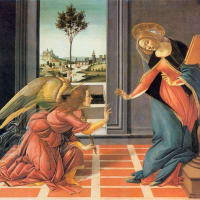

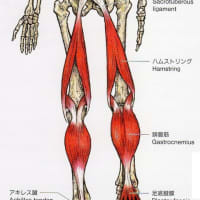
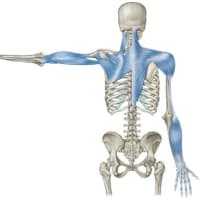
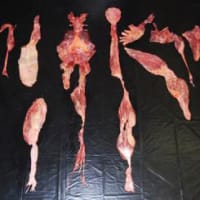
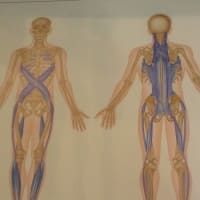
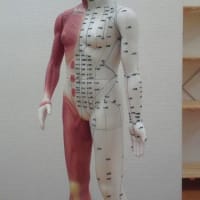
※コメント投稿者のブログIDはブログ作成者のみに通知されます